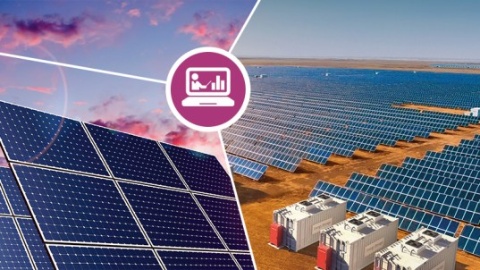Power optimizer solutions

Power optimizers is a DC-DC converter that is controlled to transfer the maximum energy possible from PV panel. This function is also called the maximum power point tracking (MPPT). MPPT is used to maximize power extraction under any environmental conditions, including changes in irradiation levels and temperature. MPPT can be implemented at PV panel level or at string level. MPPT at PV panel level will provide larger energy yield. To implement MPPT at PV panel level power optimizers are used.
Installing a power optimizer on a PV panel also enables a rapid shutdown function (RSF) to be implemented, which is required for residential solar installations in some regions. Power optimizers operate outdoors under harsh conditions and so a compact form factor, high-efficiency levels and a long lifetime are crucial success factors for these units.
We offer a wide range of products with different packages and technologies, including OptiMOS™ MOSFET, 2EDL EiceDRIVER Gate driver IC’s and XMC™, PSoCTM high performance MCU.
This enables manufacturers to create optimized, efficient solutions for single-panel and multi-panel optimizer designs.
Podcast4Engineers: Solar

Photovoltaic systems – commonly known as solar power – are driving the shift from fossil fuels and bringing us closer to having abundant, green energy. Innovative and reliable power semiconductors and inverter technologies ensure that harnessing solar power is more convenient, efficient, and attractive.

Let’s learn more about how solar inverters work, from the ones we have in our houses, to the ones that are applied in major factories. We will also see how Infineon innovates in power semiconductors for solar inverter technology and how that can help with reducing costs and time to market.

In this module, we will have a look at different solar inverter trends and how the technology is evolving.
And afterwards, we will see what Infineon’s comprehensive solutions for the positioning of solar applications are.
Webinars
Solar and Energy Storage Systems (ESS) are crucial in the energy supply chain. This webinar gives an overview of solar and ESS trends and discusses the importance of residential solar and ESS for renewable decentral energy generation. It will also discuss the different architectures of home energy systems and how Silicon Carbide (SiC) and Gallium Nitride (GaN) can improve performance in various power conversion stages to meet future application trends.

Join the webinar to learn about the positioning of SiC for in solar and energy storage applications. We will talk about the benefits of using Infineon’s Silicon Carbide MOSFET for solar and energy storage power conversion supported by real application examples.
In joining the webinar you will get a better understanding of the main technology trends in solar inverters.
The trend toward smart homes and connected systems demands a common communication interface between all home appliances and a PV inverter to enable a better balance between energy generation and consumption.
The main objective of this webinar is to explain the key technical features and system-level benefits of Infineon's semiconductor solution for string and hybrid inverter systems up to 30 kW output power.
Key Takeaways
1. Discover key technical features and system-level benefits of Infineon's semiconductor solution for string and hybrid inverter systems
2. Examine key drivers and technological requirements in the trend toward higher integration and fan-less operation
3. Explore the role of the PV inverter in the context of the smart home
Keywords: Silicon carbide, SiC, power density, bidirectional, power conversion, efficiency, energy, solar, storage, cost-effective, cost-effective power density, bidirectional power flow capability, high-efficiency power conversion









